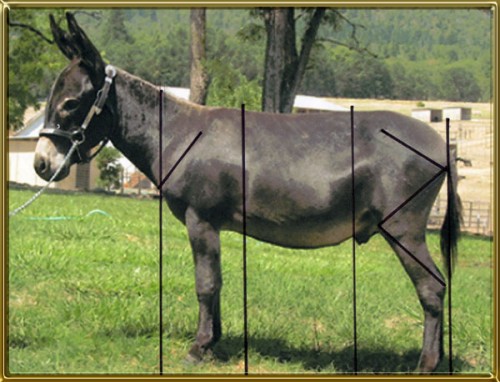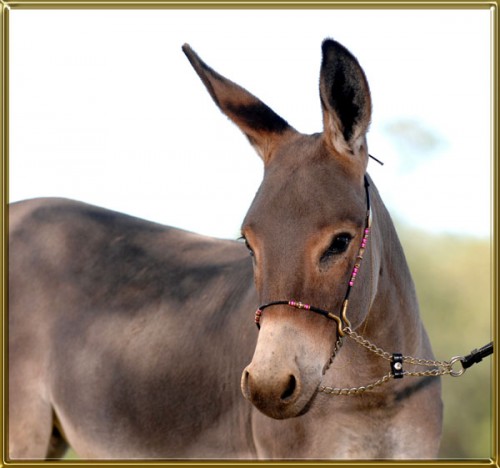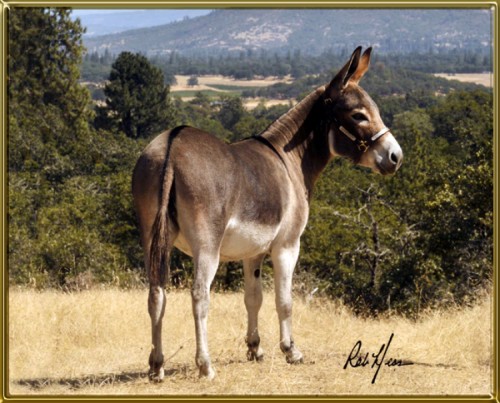written by Cindy Benson
2012
I am absolutely fascinated by the study of equine conformation. I have read oodles of books on the subject and have even paid professionals to come to my ranch and teach me using my own animals. All of this has been really helpful but it is possible to take things one step further.
Have you ever looked at a horse, or other kind of equine, and had the person next to you say “Look how out of balance he is!” or “Well, his hip angle is all wrong”. You are both looking at the same animal but may not see the same things because you have to know where to look and know what “ideal” is. Studying photos has really helped me educate my eye. Some of the study of conformation is subjective but most of it, really, is bones. I have found that looking at an equine in person and seeing what I think I see and then going to a good photo of him and proving it one way or the other is helpful in my education.
Notice that I said “good” photo. Taking good equine photos is a learned skill. Bad photos are out there all over the place but it is easy to take good ones and this is how. The first thing the lens comes to will appear larger than all the rest. This is a key point. If you stand at an animal’s head and take the photo the head will appear to be huge in relation to the body. This kind of distortion can make it very difficult to find value in the rest of the photo as far as our study goes. The camera must be level with the vertical center of your subject. If you look down at your photo subject the photo will be distorted. Further, you can make a good equine look bad or a poor specimen look better based on how the photo is set up. For instance, when I take a photo for marketing purposes of a donkey with slight hindquarters I will stand at the side view of him, have my camera level and centered to the photo, and I will position myself slightly closer to the hindquarter than the shoulder. This will change his balance in the photo and improve the look of his hip. For our purposes a photo does not need to be perfect but it is helpful to understand the angle of the camera so you know if distortion exists.
I use a side view photo with a level centered camera angle to begin. The first thing I access is balance. I draw perpendicular lines; one at the front of his chest, one just where your cinch would be, one where the loin joins the back, and the last line is drawn from the outside of the hindquarter. Then I measure: from my first line to my second line, from my second line to my third, and from my third line to the outside hindquarter. Then I use a ruler to check if my visual assessment of this animal was correct. This will tell me if the back is too long and if the three segments are the same length. I draw lines to measure the angles in the hip, correctness of legs front and back, shoulder angle, legs from the side view, and there are several more ways to use this tool than I have talked about here.
Over the years doing this has really helped train my eye. I always evaluate the animal in the photo per my visual judgment, and then I check to see how correct I was in my evaluation by using the lines drawn on the photo. It has helped me be much faster at evaluations as well and this really helps when I am out in the field looking at someone else’s donkeys.
The other thing that I have found important is to give language to what I see. I can look at a donkey and say I like him or I don’t; but why? It has helped train my eye to be able to know that it is because his back is too long, or his shoulder is short and a bad angle, his hind legs are camped out, his gaskin is too long, etc. It is also a help when I try to talk to someone about this animal. My friend knows what exactly I am looking at and it helps me to sound a bit intelligent.
I believe the study of conformation may be a lifelong challenge and I look forward to it. Over the years I have gone from understanding the big picture characteristics, like being out of balance, to being able to recognize the finer point of where in a leg a deviation originates. This has helped me immensely in selecting breeding combinations and has resulted in increasingly good quality foals. I find the whole process quite rewarding. I hope you will too!


